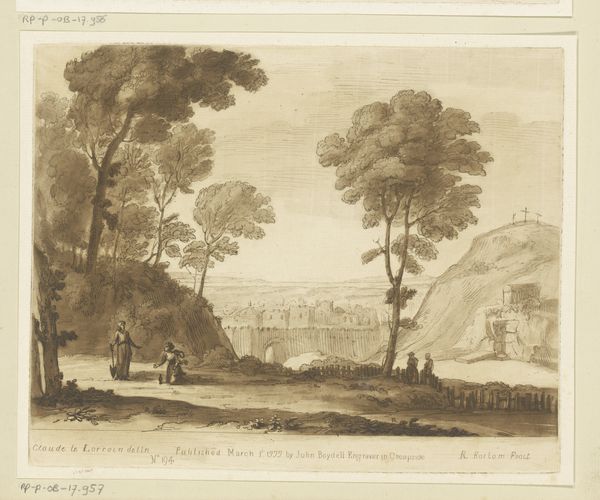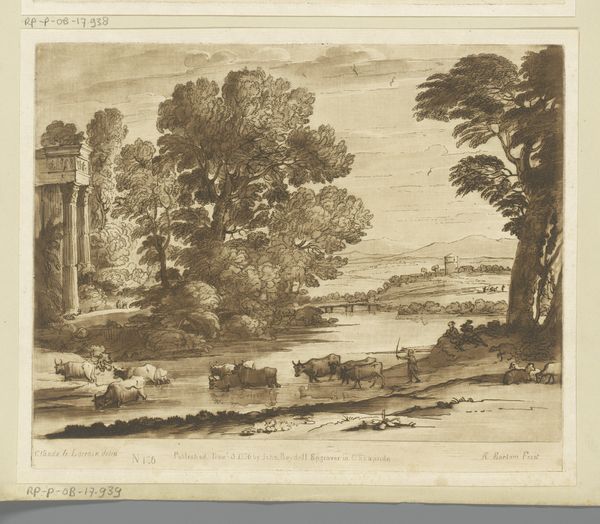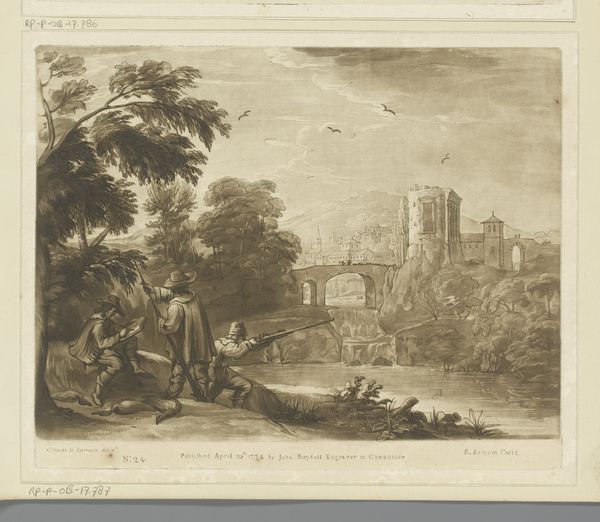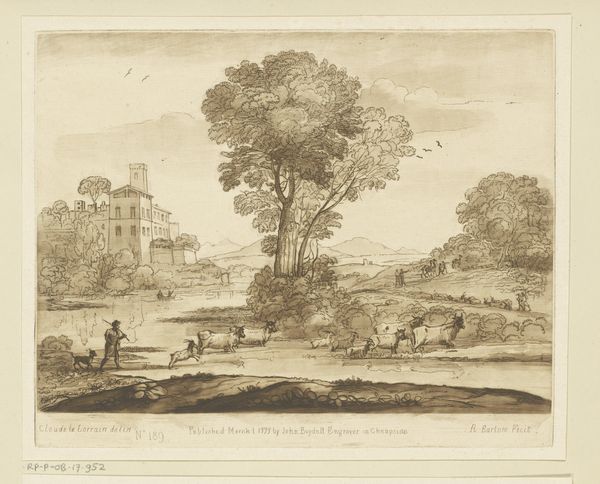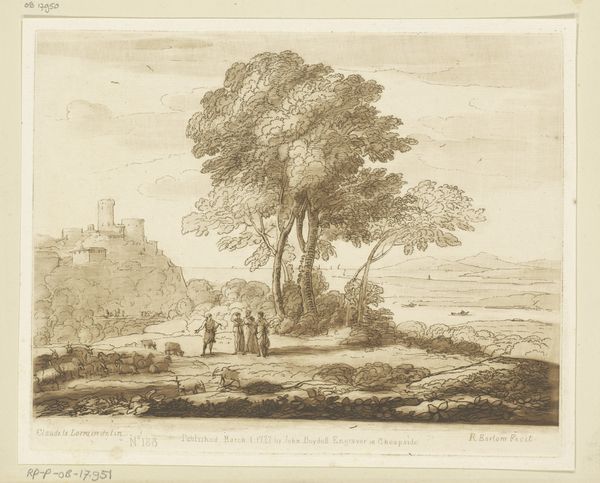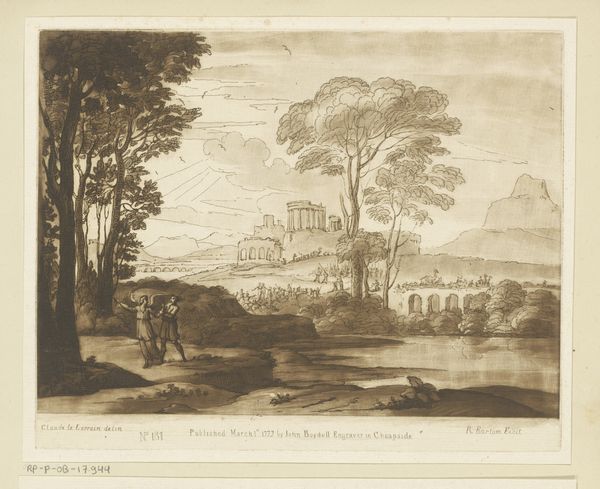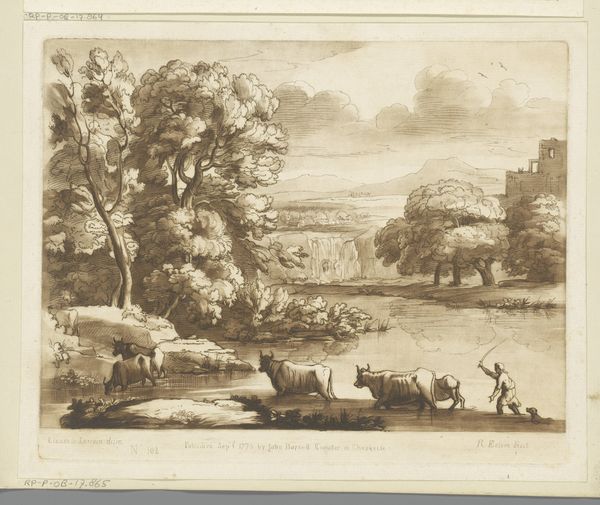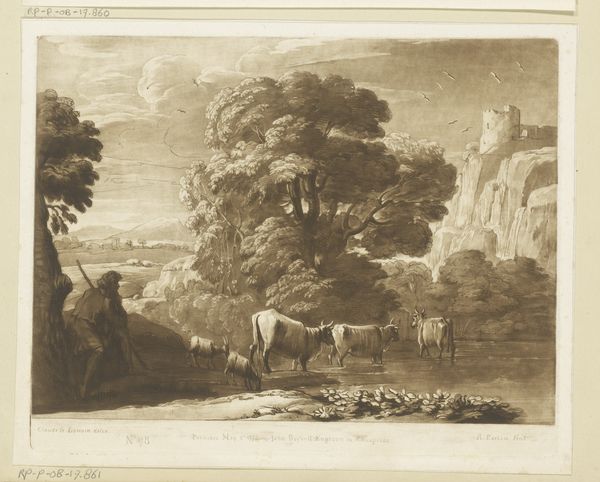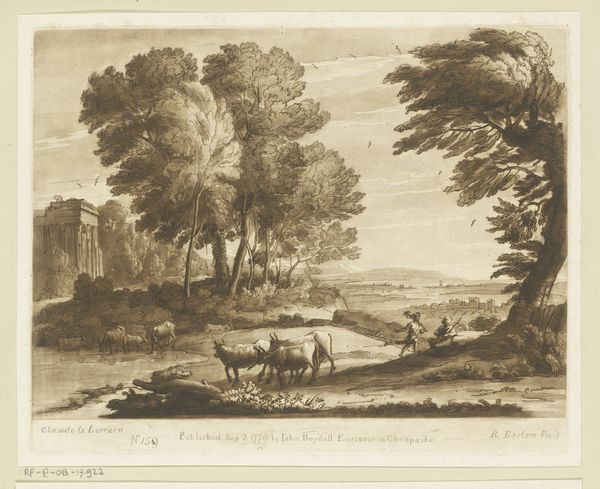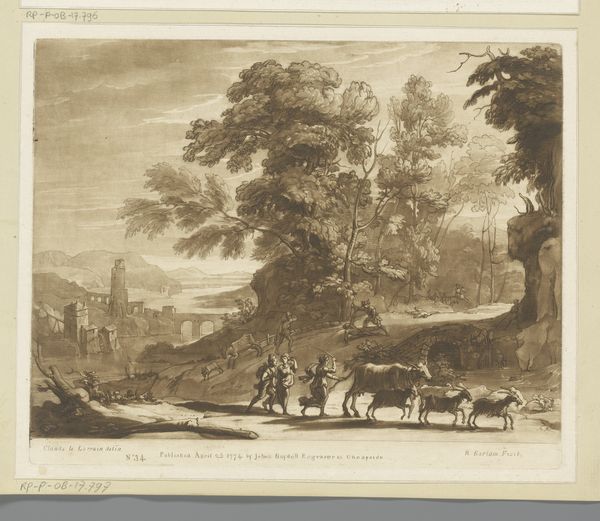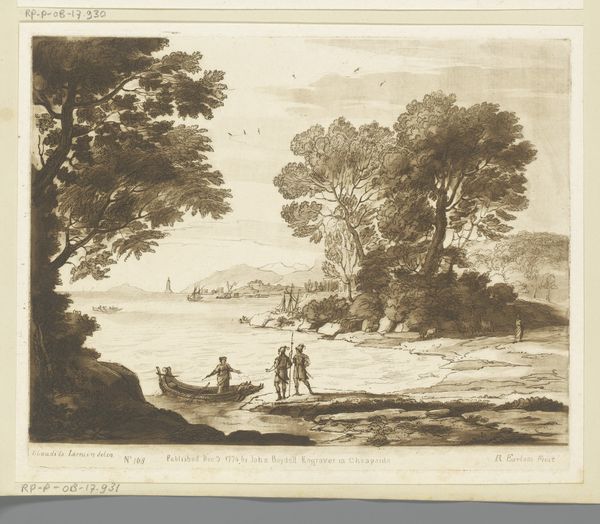
Landschap met vijf pratende herders, schapen en ruïnes Possibly 1777
0:00
0:00
richardearlom
Rijksmuseum
Dimensions: height 206 mm, width 257 mm
Copyright: Rijks Museum: Open Domain
This landscape with shepherds, sheep and ruins was etched by Richard Earlom in the 1700s. Dominating the scene are the pastoral figures amidst classical ruins, symbols deeply rooted in the ideal of Arcadia. The motif of shepherds in idyllic landscapes stretches back to ancient Greece, appearing in Virgil's Eclogues, and has been constantly reimagined through art history. We see echoes of this theme in the Renaissance, where it becomes intertwined with notions of earthly paradise and spiritual harmony. However, these symbols are never static. The presence of ruins introduces a layer of melancholy, a meditation on the transience of human achievement. This can be linked to the “memento mori” motif that serves as a reminder of mortality and decay. Such images tap into our collective memory, stirring profound emotions tied to longing, loss, and the cyclical nature of time. In this image, Earlom invites us to reflect on how symbols evolve, carrying echoes of the past into our present consciousness.
Comments
No comments
Be the first to comment and join the conversation on the ultimate creative platform.
